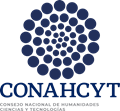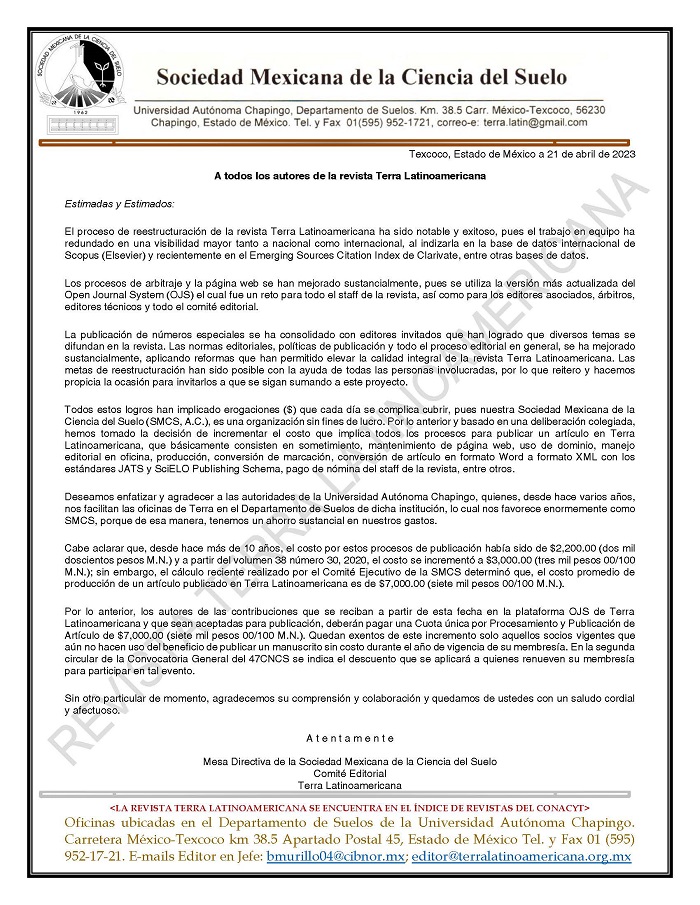Nutritional status of a rose agroecosystem (Rosa spp.) on the eastern slope of the volcano Iztaccihualt.
DOI:
https://doi.org/10.28940/terra.v35i3.132Keywords:
ornamentals, cut flower, soil healthAbstract
Approximately 3600 hectares are planted with roses (Rosa spp.) in the state of Puebla, Mexico. This activity has an estimated value of 625 million pesos per year and allows the participation of women in the regional economy. The use of high nitrogen fertilization on market roses, which surpasses 7000 kg ha-1, is excessive and affects soil health and the economy of the producers. The objectives of this study were (1) to evaluate the current conditions of soil fertility in greenhouses that produce roses in Irrigation District 05 San Martín Texmelucan and (2) to study the effect of three sources of organic matter on the production, quality, and nutritional status of roses, and (3) to assess the physical condition of the treated soils. One hundred and twelve greenhouses located in four edaphoclimatic conditions were selected for the study. Soil samples were collected and their chemical properties evaluated to determine soil fertility. In a second experiment, three sources of organic matter (OM) were tested in one site: compost, cattle manure and chicken manure was applied on three varieties of rose: Anastasia, Selena and Latin. A modified completely randomized design was used. Number of stems/plant and stem length were measured, and analysis of variance and mean comparisons were performed. Soils had contrasting soil fertility properties. The quality of the roses increased with the three sources of OM three months after application but decreased in the ninth month. Chicken manure increased performance of the Anastasia variety and compost in the Selena variety. The OM sources increased the percentage of macroaggregates and the compost added to Anastasia and Selena produced the highest percentage. However, macronutrient concentrations in all rose plants were similar.Downloads
Publication Facts
Reviewer profiles N/A
Author statements
- Academic society
- Terra Latinoamericana
- Publisher
- Mexican Society of Soil Science, C.A.

















